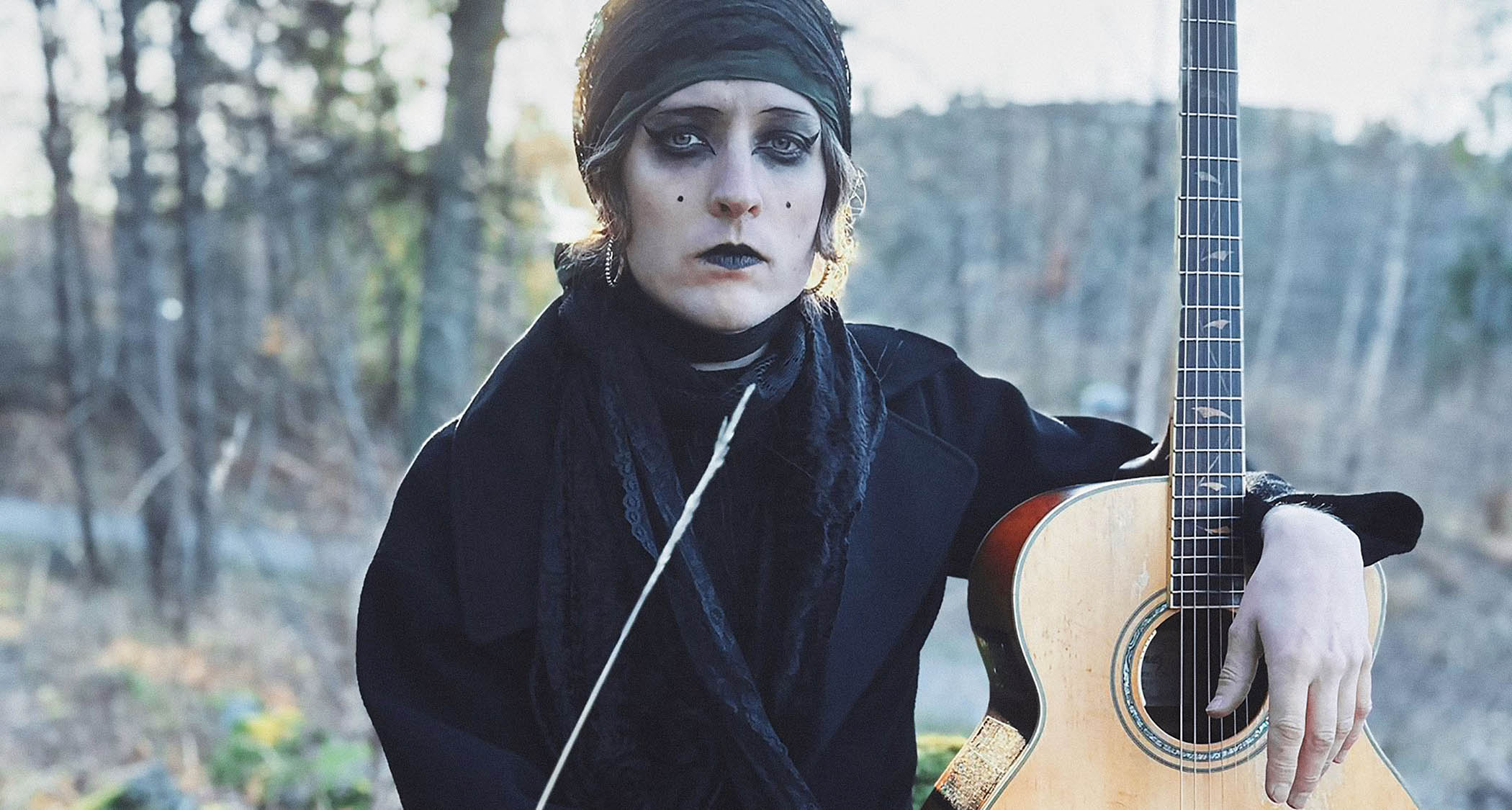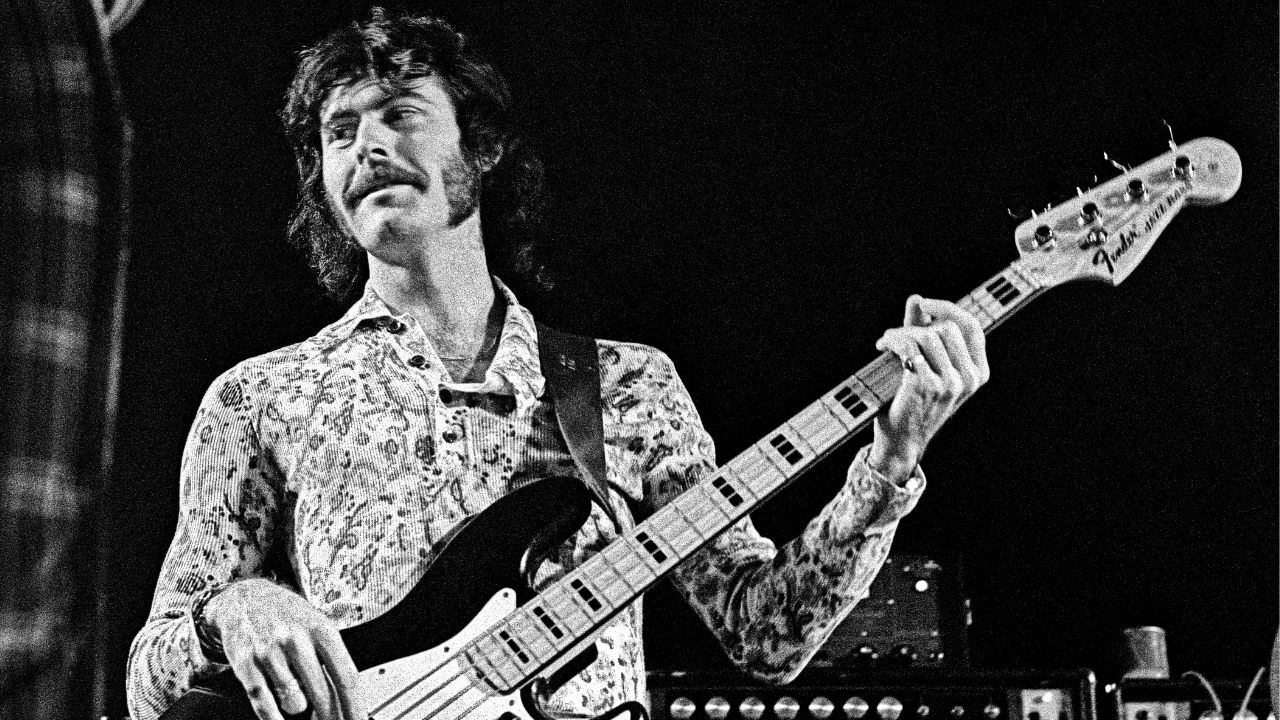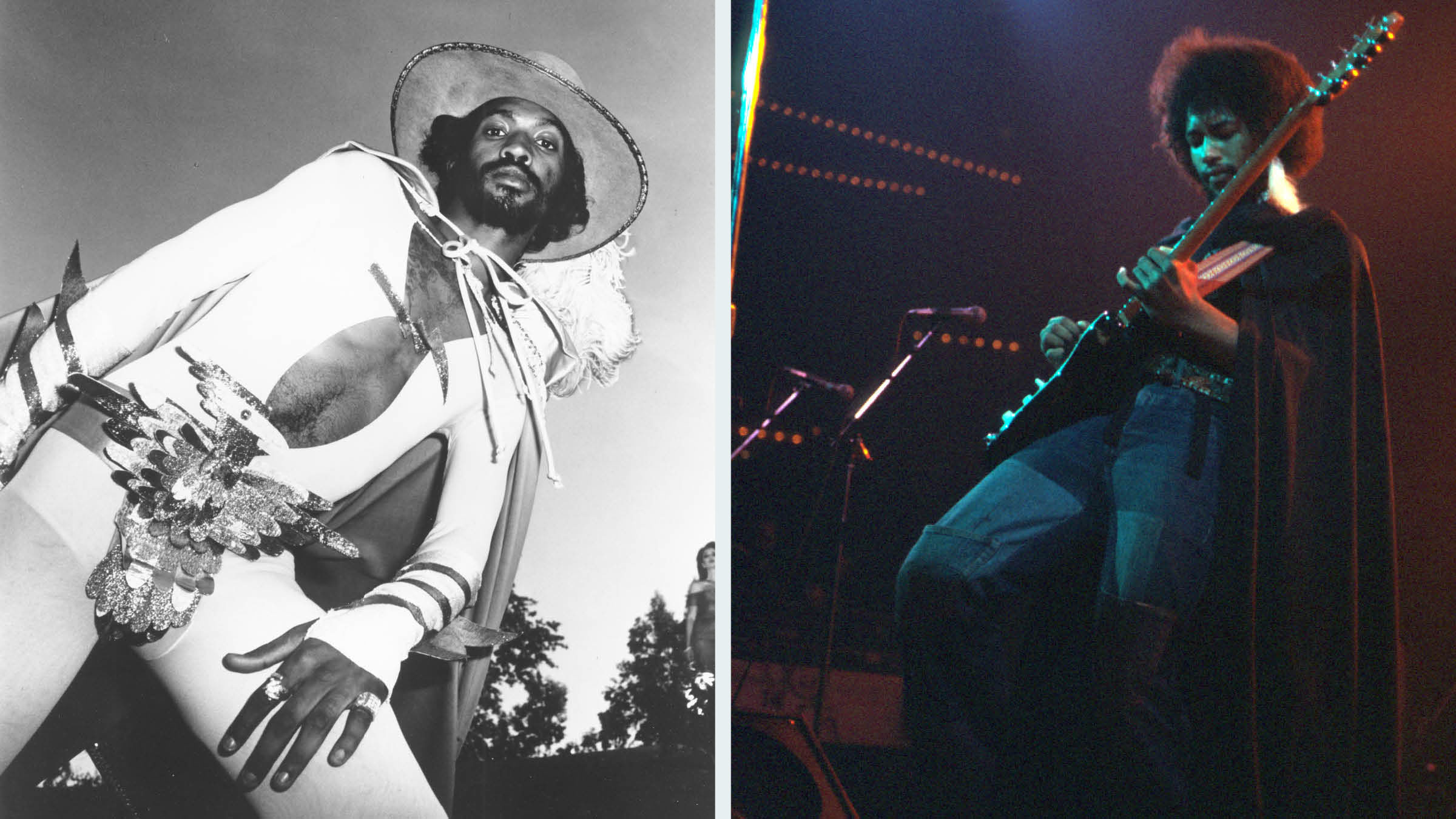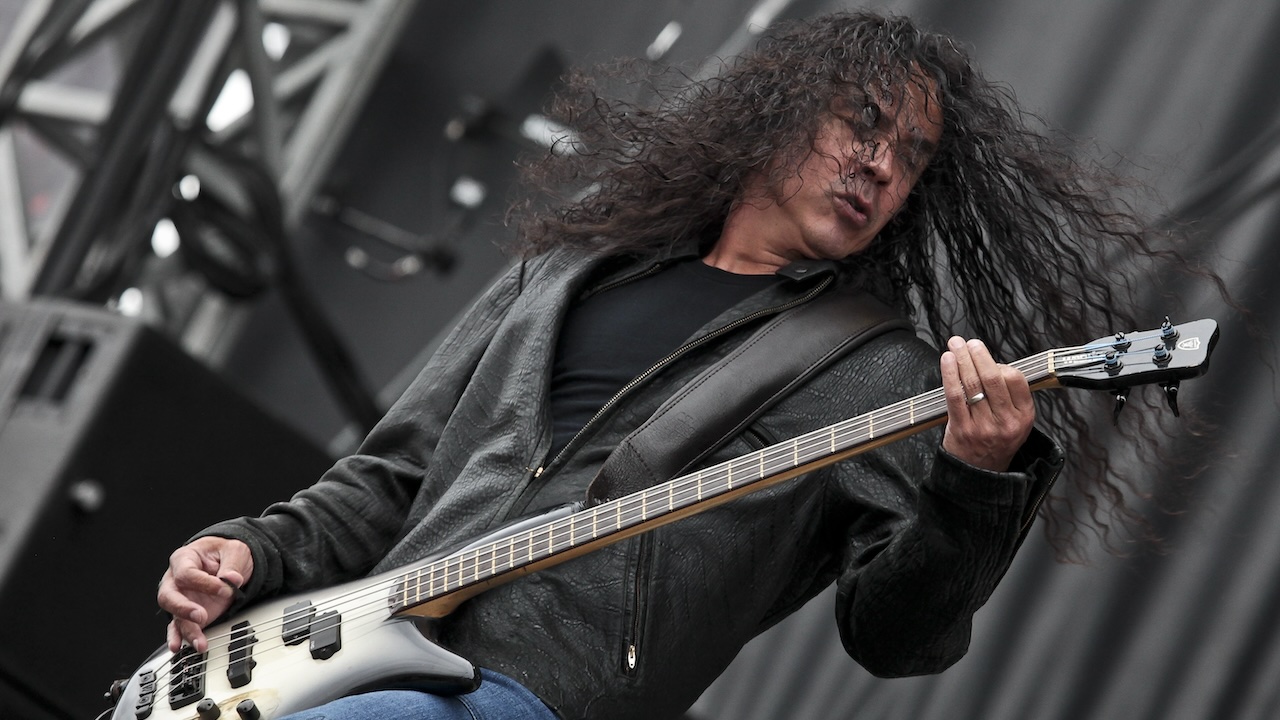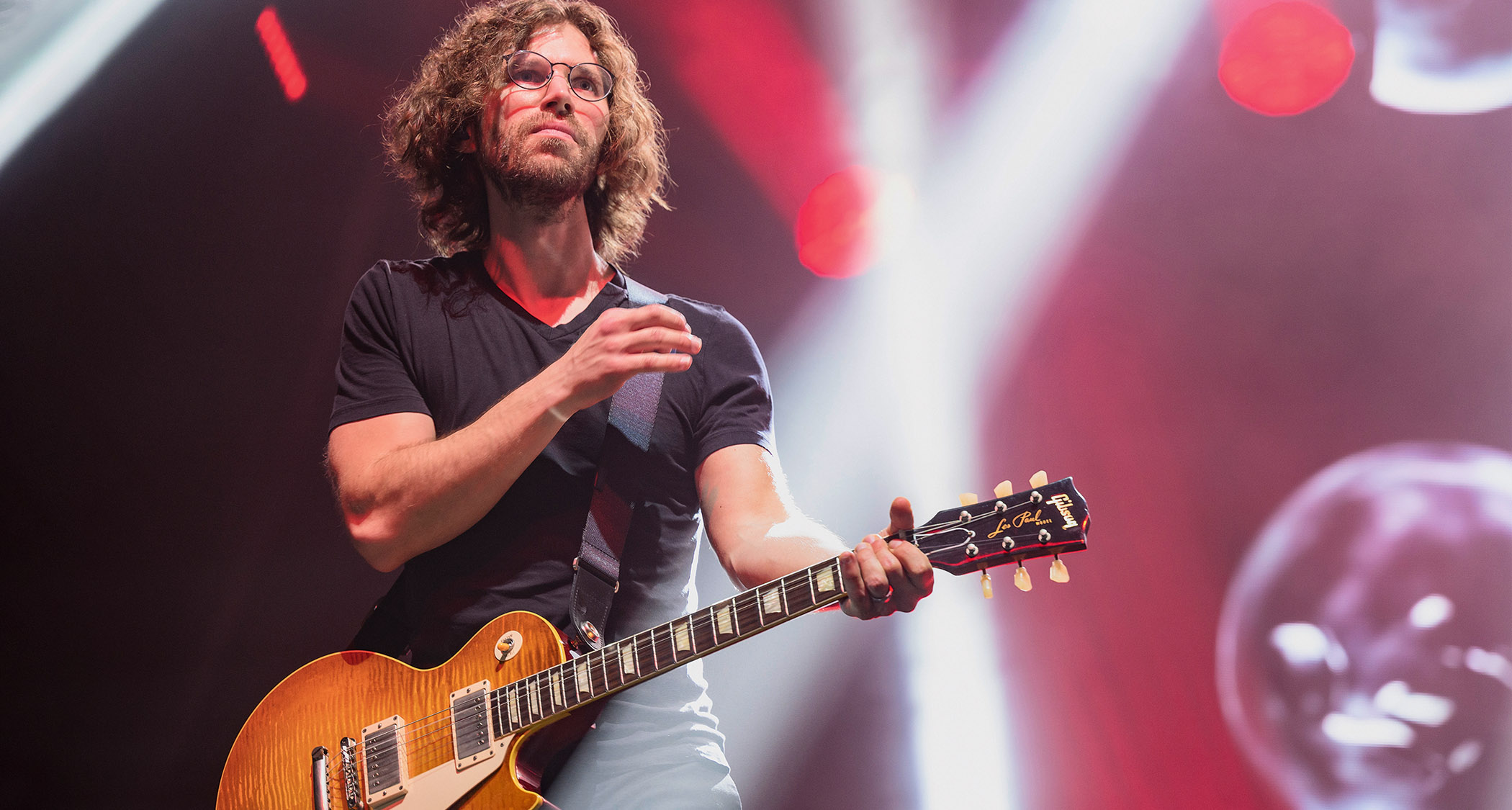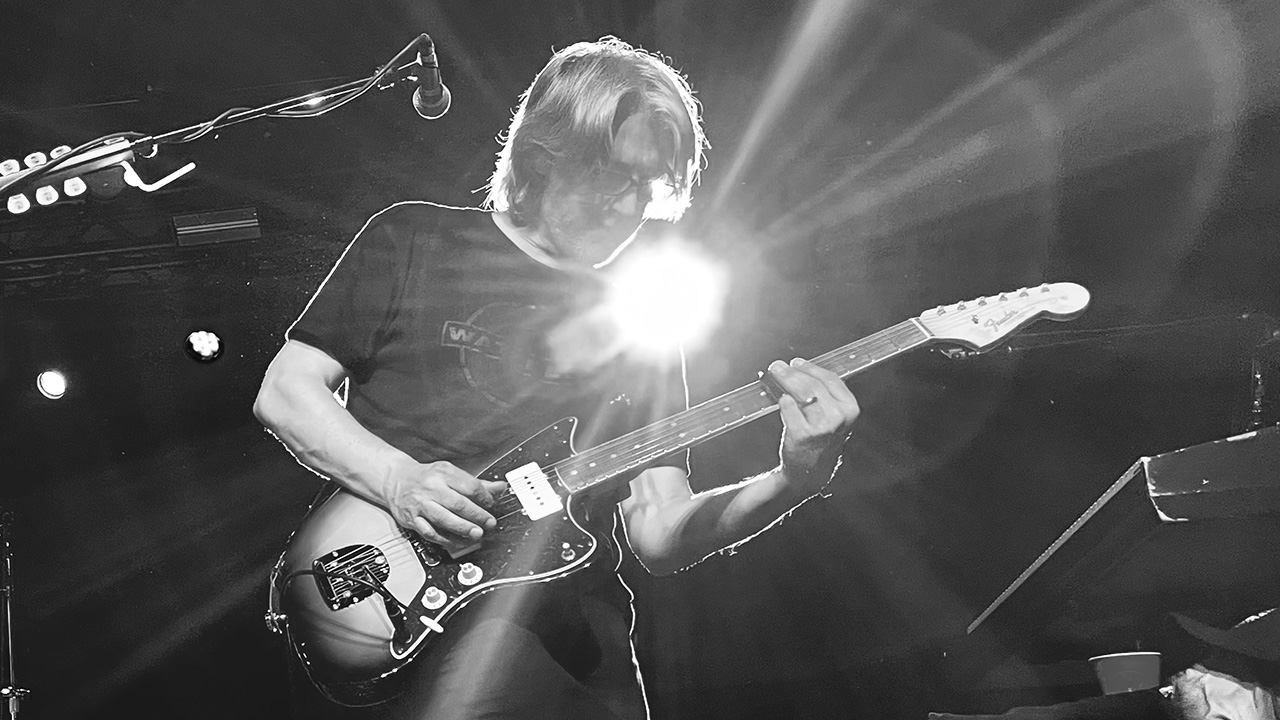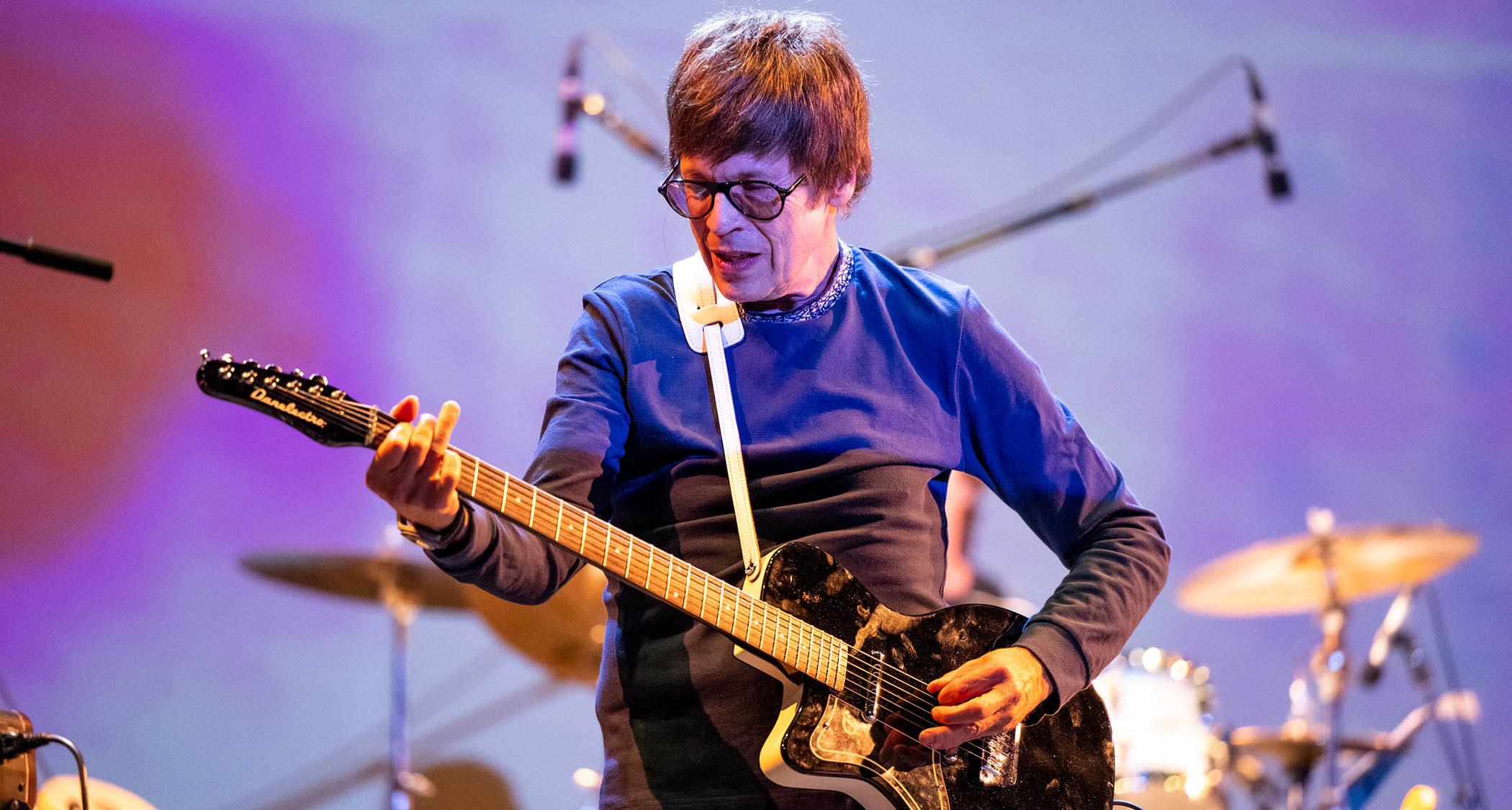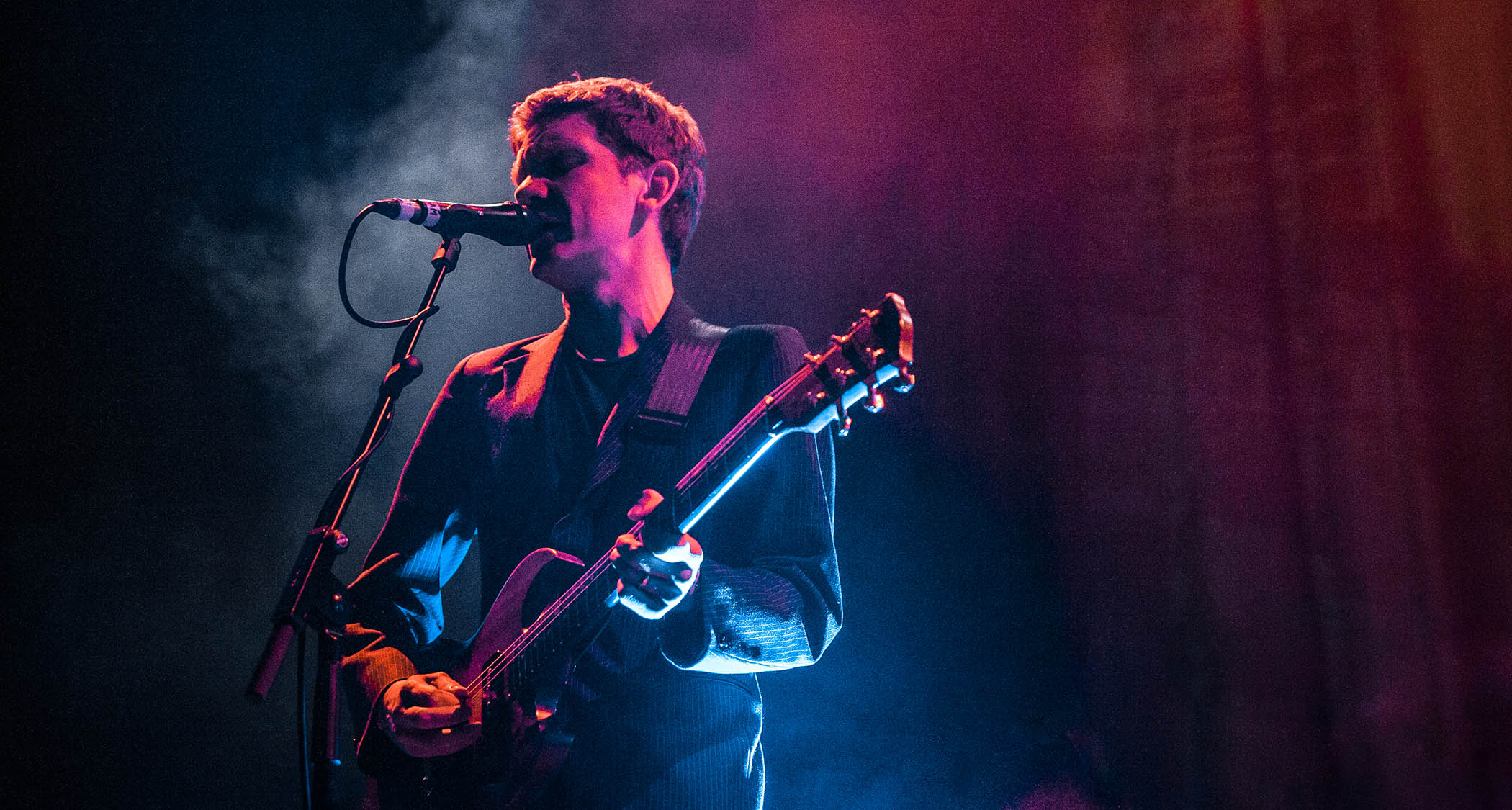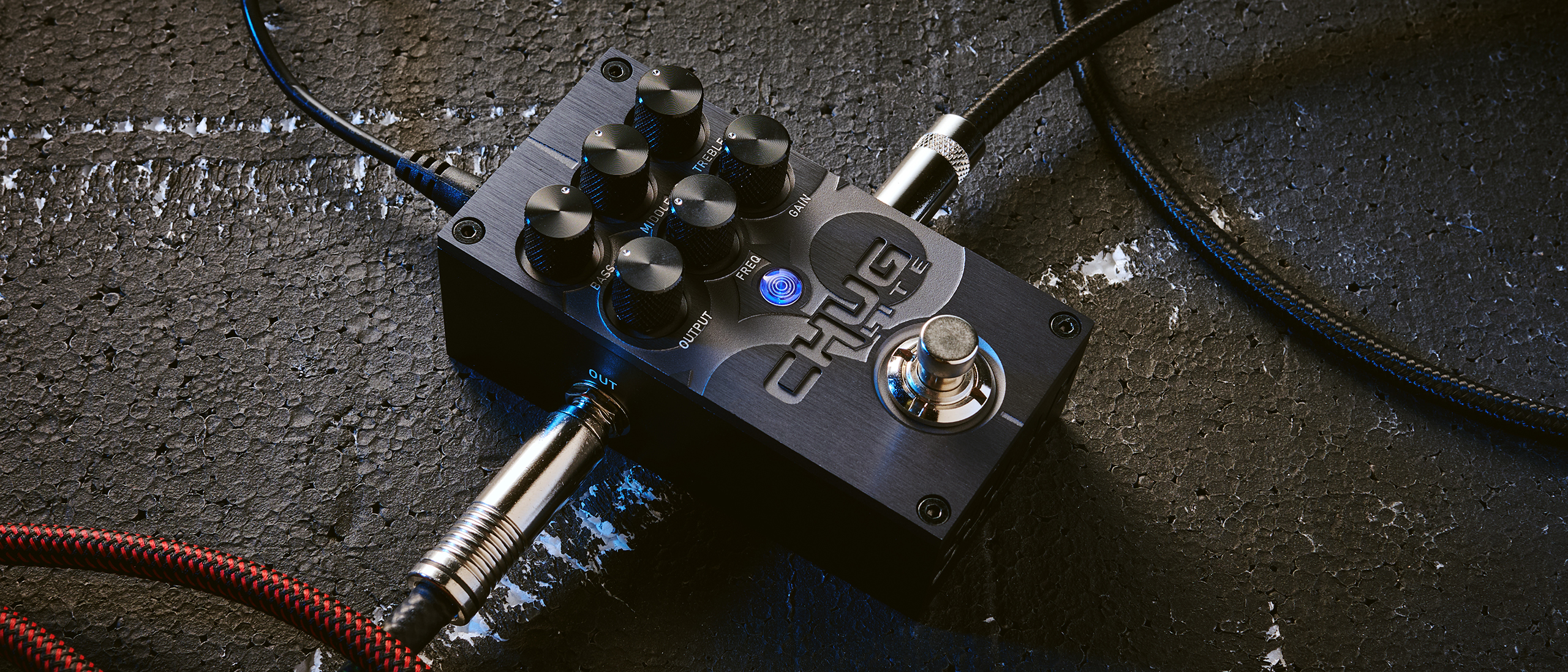Meshuggah’s Mårten Hagström and Animals As Leaders’ Tosin Abasi on the expansive possibilities of the 8-string
Few have done more to expand the popularity of the extended-range electric guitar. Here, Hagström and Abasi talk techniques, tones, and epiphanies, and have some advice for guitarists looking to expand their repertoire beyond six strings
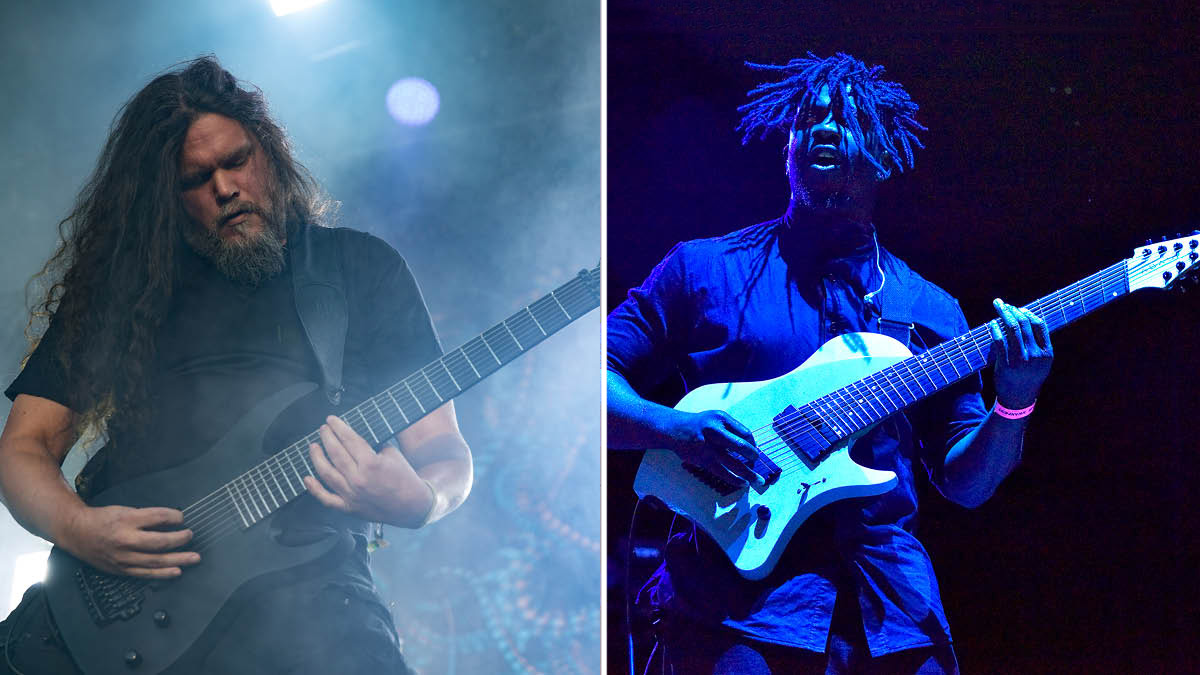
In 2022 the art of eight-string guitar is in rude health. This was once an incredibly obscure instrument, with roots going as far back as 19th-century classical music. But since 2007, when Ibanez launched the RG2228, the first mass-produced eight-string, its popularity has grown and grown.
You can easily find an eight-string in most first-hand guitar shops. This popularity is mainly thanks to metal bands who called for lower and thicker tunings to take their imaginations to the extreme – foremost among them Meshuggah, math-metal pioneers from Sweden, and Animals As Leaders, masters of instrumental tech-metal from Washington D.C.
In both bands' new albums, the extended range of the guitar is explored by two guitarists: Märten Hagström and Fredrik Thordendal on Meshuggah's Immutable; Tosin Abasi and Javier Reyes on Animals As Leaders' Parrhesia.
In conversation, Märten and Tosin reveal the secrets to mastering this instrument – and what it gives them in terms of creativity.
What have you both learned about getting more mileage out of an eight-string?
Tosin: “That’s an important question, because a lot of people might be looking at their guitars from a six-string perspective. Ultimately, the six-string can be the core of how you understand an eight-string, especially if you retain standard tuning.
“We often tune our eight-strings to drop E, so you can still perceive it as a six-string in standard tuning. All scales and shapes repeat per octave, so it’s good to acknowledge the repetition within the fingerboard.
Get The Pick Newsletter
All the latest guitar news, interviews, lessons, reviews, deals and more, direct to your inbox!
We often tune our eight-strings to drop E, so you can still perceive it as a six-string in standard tuning
Tosin Abasi
“Imagine if you’re playing an A power chord on the fifth fret on your sixth string – with our tuning, if you barre all the way down, you have another fifth interval and a low octave.
“It’s like drop D, because those three strings give you a functional chord. That helps retain orientation. You can use lower notes in the same positions, while also finding higher notes to create more width and distance.”
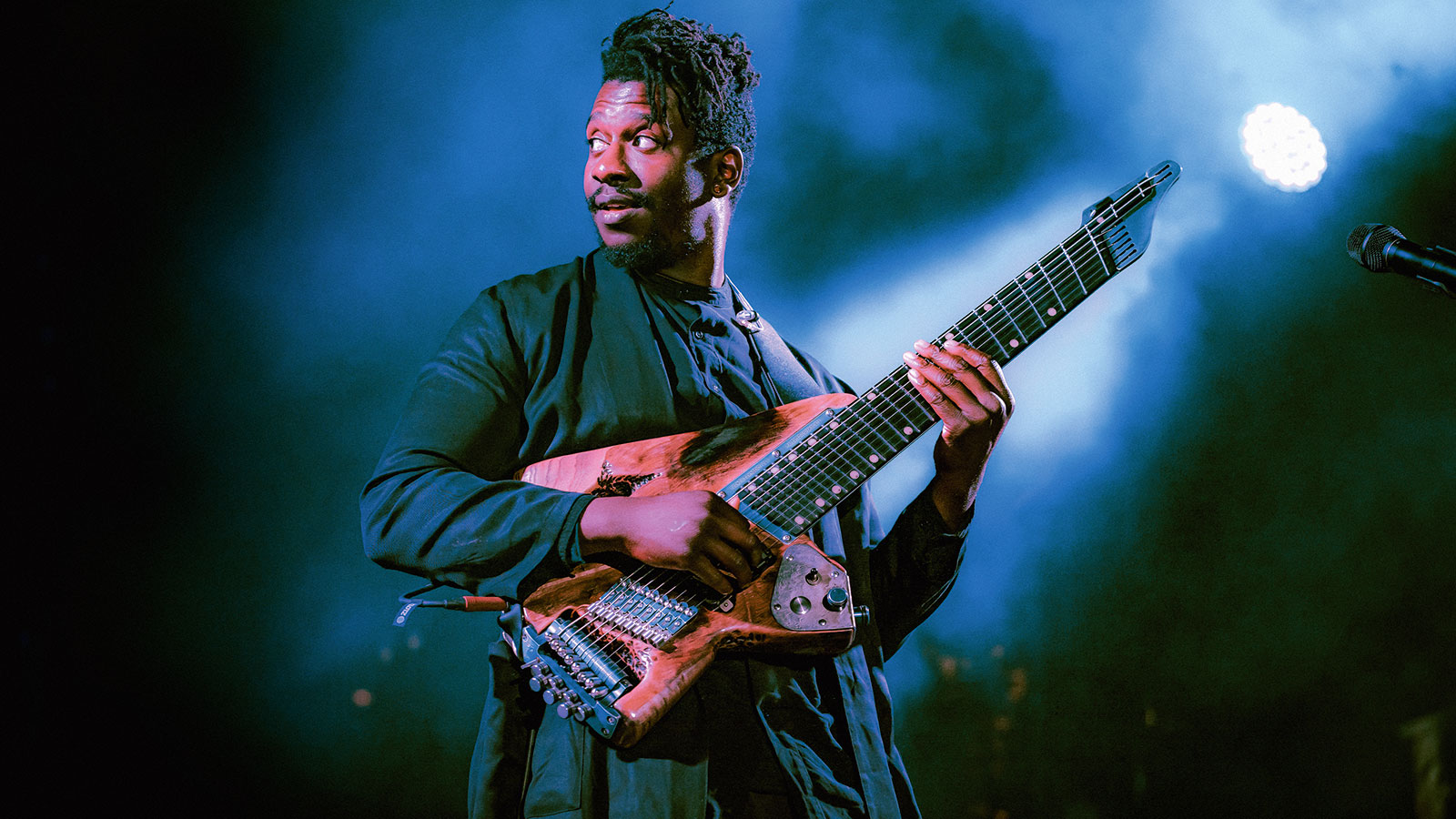
Märten: “We didn't have an engineering masterplan or any idea how to go about using eight-strings. With Meshuggah, it's always been about finding unique sounds. So we learned how to play eight-strings as we were learning how to compose with them. Our technique is something we manufactured as we went along.
We didn't neccessarily want to add extra strings, but we knew we liked the tone
Mårten Hagström
“The best advice I can give is find how the extended range can benefit your style. That's what worked for us. It affected how we attack the strings and how we write riffs. It was all about new atmospheres and avenues that weren't available on a six-string. Start thinking about what the extended range can actually enhance.
“To be honest, we would have loved to continue using baritones and seven-strings. We didn't neccessarily want to add extra strings, but we knew we liked the tone.”
A lot of players find the jump from six to seven easy enough, but eight is an entirely different ball game...
Mårten: “I think the beauty of eight-strings is that it takes away the normal aspects of guitar playing – they can feel huge, like playing a piano. There are a lot of adjustments in terms of angles, like with your wrist and picking technique... all these small things you have to get used to.
“As you said, if you play a six-string, everything will transpose pretty nicely onto a seven. Eights are a different matter. For me, it’s all about being comfortable with the tone. Sometimes I hear eight-string stuff and it sounds like someone’s just detuned something. And other times I will hear someone actually utilising what the instrument can do.”
There are a lot of adjustments in terms of angles, like with your wrist and picking technique... all these small things you have to get used to
Mårten Hagström
Tosin: “It’s all about taking the chord voicings you know and adapting them to the eight-string, and using octave displacement. You can also have a lot of fun using the low E as a pedal tone in your riffs, using other chords to superimpose against it, like a G major. There are a lot of options out there.
“I like to make use of the full range of the eight-string, almost like a piano or harp. You get this huge spread that’s not possible on a six-string. Think of it as an opportunity to use three-octave chords. Other times, it’s fun to just turn it up and play your favourite Meshuggah riffs!”
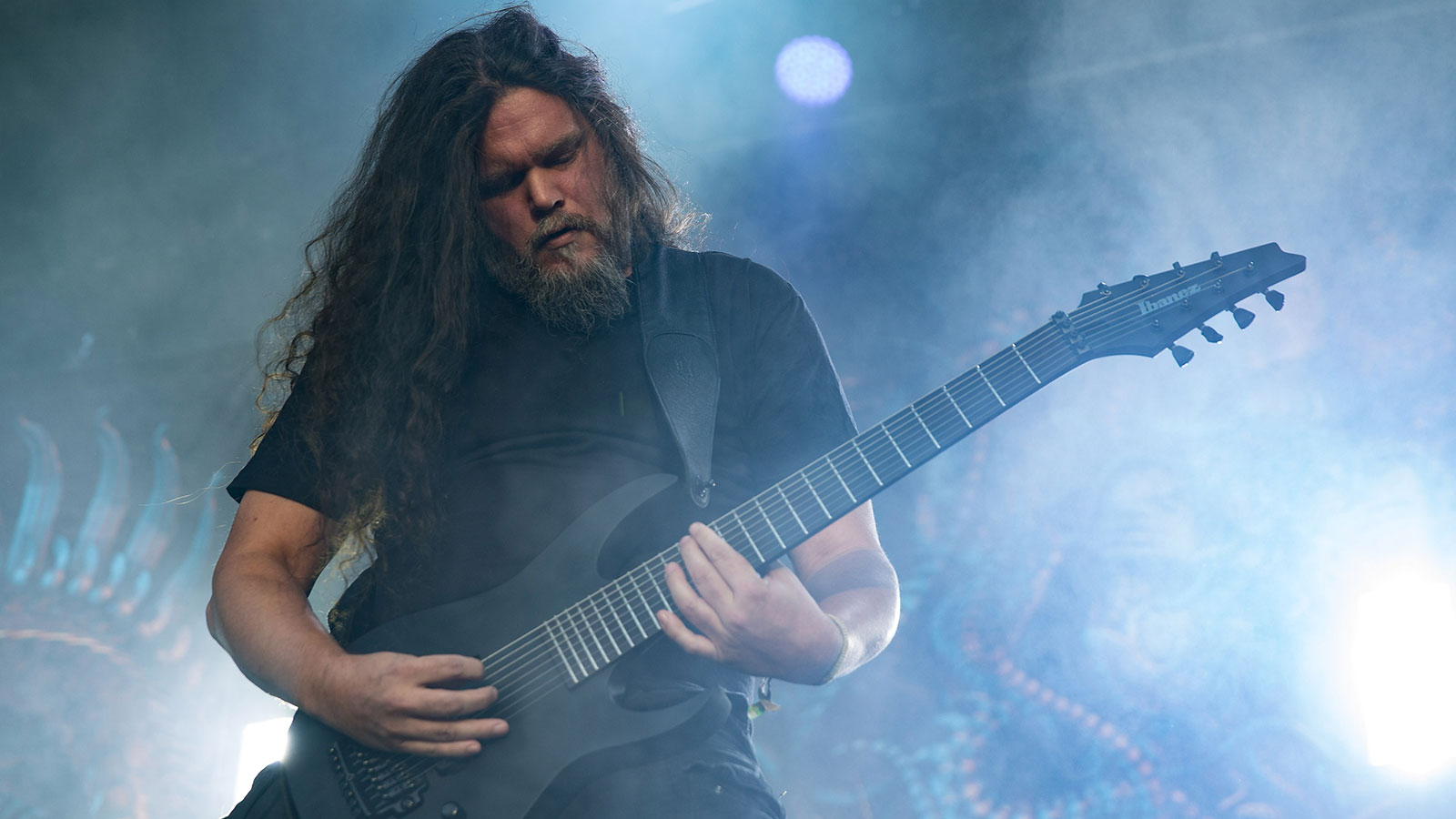
Mårten, you were experimenting with eight-strings as far as back 2002 – they were the stuff of legend back then.
Mårten: “We started discussing different ways to come up with new things after touring the [1998] Chaosphere album. We wondered what would happen if we recorded three bass guitars, for example. Just to see how different the band would sound.
“Randomly we ended up talking to a guy from Nevborn Guitars, who wanted us to try out their eight-string prototypes, though we were actually already working with Ibanez on custom seven-strings at the time. It was far from finished, but me and Fredrik found that his eight-string lent itself well to playing differently.”
In what sense?
Mårten: “We quickly figured out that powerchord chugging and riffing didn’t really work, it wasn’t as simple as transposing ideas down to the eighth string. The tone of the instrument lent itself better to the single-string stuff we’re known for. For us it was like, ‘Wow, this is a new tool that makes us sound different!’
Powerchord riffing didn’t really work. The tone of the instrument lent itself better to the single-string stuff we’re known for
Mårten Hagström
“We sounded deeper and started to write unusual things that seemed to capture the imagination, with this whole other kind of sound. We then started write things for the eight-string before we even owned one. We would tune down our seven-strings, the entire [2002] Nothing record is an eight-string album recorded on seven-string guitars... which was a bitch! We would play four bars and then need to retune, again and again.”
Tosin, you launched your own guitar company, Abasi Concepts, in 2019 and with great success – most of your models are currently sold out. What have you learned about making extended range instruments along the way?
Tosin: “Manufacturing high-end instruments is a challenge. The standard that guitarists expect is very high, and it should be! We’ve created an eight-string design that feels more approachable and guitar-like than the others out there. That was the starting point: a guitar that didn’t feel like playing leads on a surfboard.
“It had to encourage people to play complex things, sounding incredible both clean and heavy. It also had to look modern – it’s hard to introduce a new body shape that doesn’t turn players off, so we designed something that felt bold and noticeable but not too alien.
“We’re trying to distill what makes a guitar desirable. What is mojo? Why would you choose an Abasi over something else? It boils down to wood selection, like more stable and lightweight roasted woods which translate as a guitar that feels more alive, and pickups like the [Fishman] Fluence stuff, where you get a noiseless single coil with multiple voicings. It’s been fun. Gary Clark Jr. bought one of our guitars [a six-string Space T] and we didn’t even know. I had to reach out to him afterwards!
Both of your bands are known for unusual time signatures – or at least odd-time riffs against steady 4/4 beats...
Mårten: “A song like Bleed [from 2008 album obZen] sounds tricky but it’s actually pretty simple. It’s triplets in odd groupings over a 4/4 beat, with added strokes to make the rhythm move. That’s something we do a lot in our riffs, it’s that the awkward, funky groove that comes out when we write.
“The problem with playing triplets for seven-and-a-half minutes is consistency. Being technically able to play them in a relaxed manner for that long, as if you were playing an AC/DC song, is the challenge. So the hardest thing isn’t the timings themselves, it’s the parts that are like 92 notes in a row that never repeat, like we did on [2005 album] Catch Thirtythree.
“It’s the faster songs that have 16 full bars before coming back to the one. It can be tricky for the mind, especially when they only change ever so slightly. It might sound like the same riff over and over, but there are subtle differences. You can easily get lost. It’s like, ‘Man, is this the one here or do we have another bar to go?’ Keeping track is the hardest part, but it’s often over straight 4/4... just like AC/DC!”
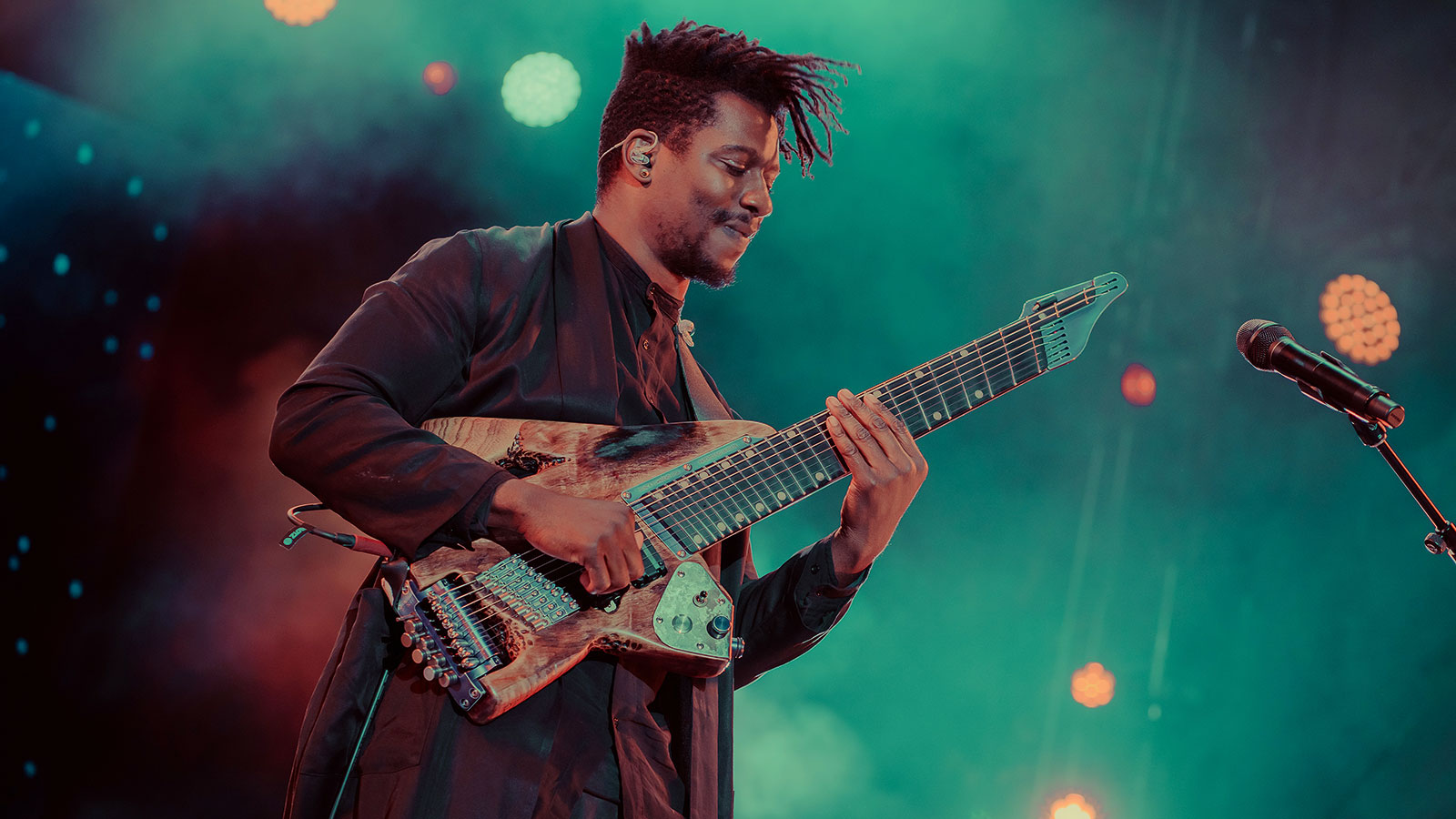
Tosin: “There’s a thing I do quite a lot which is play in 4/4 but I’ll make the end a little longer, maybe for another quarter note, so now you’re in a measure of five. But the general sense of the phrase feels like it’s in 4/4 and repeats evenly.
“It’s all about arbitrarily extending or shortening the length of certain phrases. I like to do it because it rubs expectation. The evenness of rhythm is something so deeply intuitive that we all expect to be able to tap along or nod our heads.
“But I love rhythmic and melodic surprises. I’ll come up with something that feels graspable, then I might add the complexity in, maybe every other repeat there’s one less quarter note than before or I might extend the phrase a few more notes into the next octave. It can technically be 4/4 but exploring these ideas means you can sound like it’s something way outside. The trick is to count in longer chunks.”
Both of you have new albums out. What gear are we hearing on the recordings?
Mårten: “In the studio, most of our albums have fallen back on Dual Rectifiers. Those are the go-to amps for us. This time I found the EVH 5150 III 100-Watt heads to be exactly what we were looking for. They had the gain, control and Mesa/Boogie-ness we needed, but with a more raw and unbridled kind of tone. They sounded less predictable, more organic.
“Instead of the usual Fortin 33 pedal as a booster, I actually ended up using Misha Mansoor’s Precision Drive. That was suggested by our singer [Jens Kidman], as he had one. The gate on it isn’t really all that good, it’s cool for live use but in the studio it needs some work.
“But the sound of the Precision Drive going into the EVH was super. I would use the preamp of the EVH’s second channel and run it through the power amp of a Mesa/Boogie Roadster, then out through EVH cabs. For the clean parts, I used my Roland JC-120 head.”
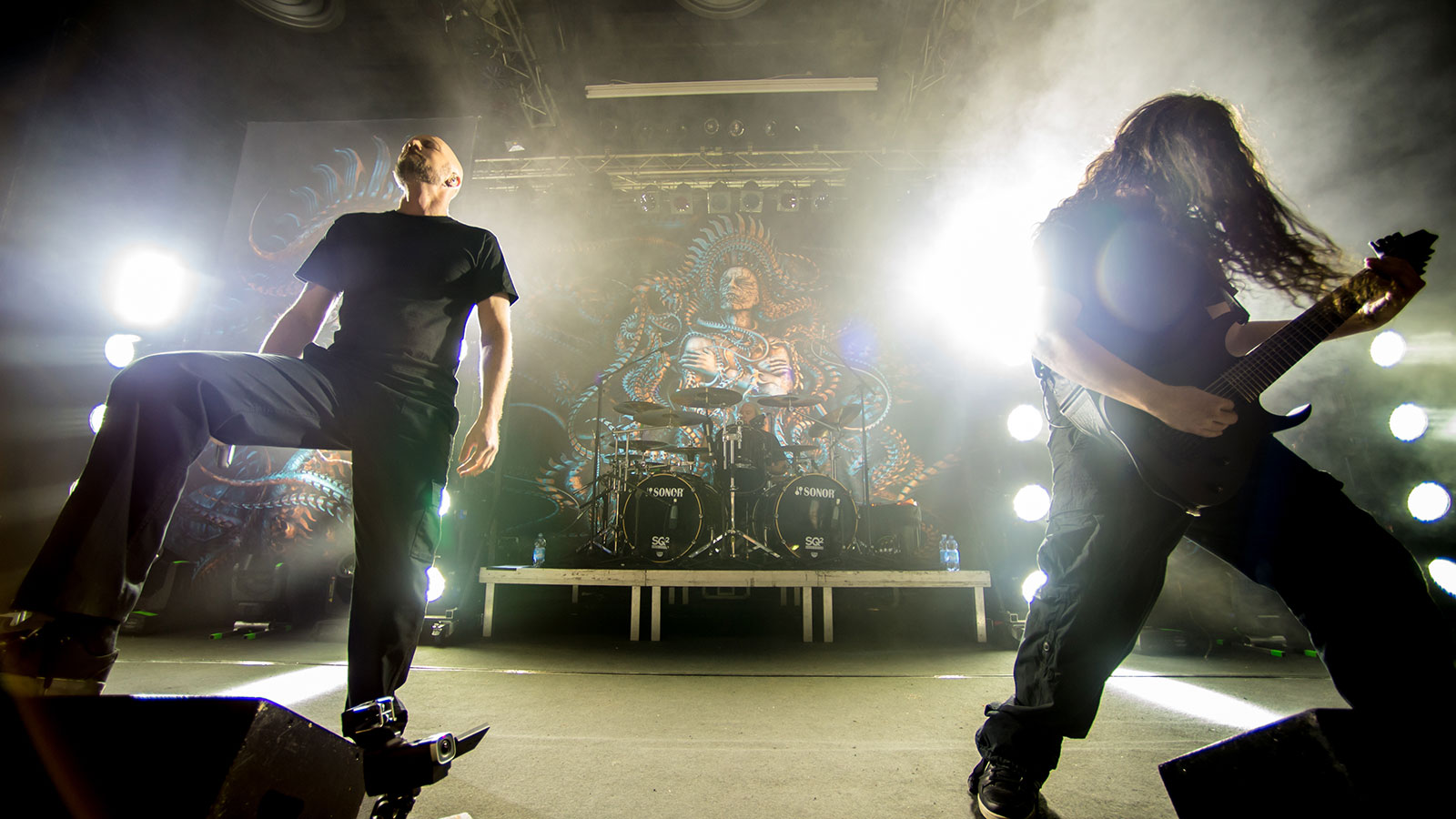
Tosin: “We began production for this album with my Neural DSP plug-in, but when it came time to mix we decided to take the DIs and see what kind of results we’d get by experimenting with real amps, cabs and mics. We started with my Morgan SW50R, which is a single channel tube head that I use as a pedal platform, with my Friedman BE-OD overdrive and the Bogner Harlow and Ecstasy Blue pedals.
“Those were the main drives we were running into the clean head. The Friedman pedal into the Morgan was perfect for all the slap tones and articulate stuff, even some of the heavier stuff. For the lead tones, it was my Abasi Pathos pedal going into the Morgan. We also ran a modded Soldano SLO from the 90s, which added this great character in the midrange when blended in.”
And how about the actual eight-strings themselves?
Mårten: “I’d say 95 percent of the guitars were recorded with my M8M Ibanez Custom. It’s basically our signature M8M but with a bolt-on neck and it’s a little shorter in scale with a piezo mounted on it. It’s my favourite instrument. I use it as much as I can, but not live because I’m scared of destroying it.
“For the clean parts, I used my Roland JC-120 head. I don’t know what Fredrik used because he recorded in his studio. He wasn’t around for any of this album and hasn’t been writing for years, he’s been busy doing his own thing. For the four leads he recorded at his place, I’m pretty sure it was his [signature] Ibanez Stoneman.”
I’m pretty pragmatic in the studio – if my favourite gear is not doing what I want then I’m quick to find an objective solution
Tosin Abasi
Tosin: “We used Abasi Concepts guitars for nearly everything – the solo on Thoughts And Prayers was performed on an ESP. For some reason we weren’t happy with the tone on the Monomyth solo so the engineer suggested using one of his guitars. We went digging through and there was this Les Paul.
“I couldn’t even tell you what year it was from but it had this nice prominent midrange without being too bright, it sounded really smooth so I tracked with that. I’m pretty pragmatic in the studio – if my favourite gear is not doing what I want then I’m quick to find an objective solution. It’s kinda funny though, because you wouldn’t think a Les Paul would be anywhere near an Animals As Leaders record... but it happened!”
Amit has been writing for titles like Total Guitar, MusicRadar and Guitar World for over a decade and counts Richie Kotzen, Guthrie Govan and Jeff Beck among his primary influences as a guitar player. He's worked for magazines like Kerrang!, Metal Hammer, Classic Rock, Prog, Record Collector, Planet Rock, Rhythm and Bass Player, as well as newspapers like Metro and The Independent, interviewing everyone from Ozzy Osbourne and Lemmy to Slash and Jimmy Page, and once even traded solos with a member of Slayer on a track released internationally. As a session guitarist, he's played alongside members of Judas Priest and Uriah Heep in London ensemble Metalworks, as well as handled lead guitars for legends like Glen Matlock (Sex Pistols, The Faces) and Stu Hamm (Steve Vai, Joe Satriani, G3).
“With its tone knob backed off this thing gets sasquatch-hairy without losing clarity. It’s a surprisingly killer stoner rock machine”: EVH SA-126 Standard review
“A huge Achilles heel with the non-traditionals”: What’s the hardest part about designing a fresh guitar? According to Novo Guitars, it’s probably not one you’d expect

